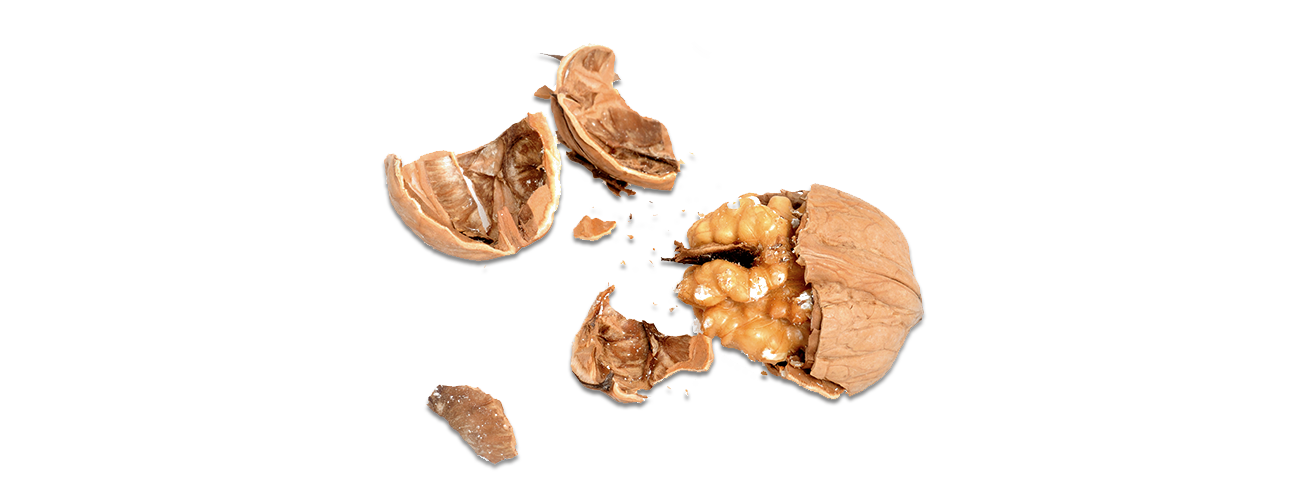Mechanical division
The step of mechanical division in dispersion
Just like the dispersion, the mechanical process can be divided into three steps
- wetting
- mechanical division
- flocculation stabilisation
The step of mechanical division itself can also be separated. To enable the agglomerates to be dispersed, they must
- get into a dispersing situation, e.g. into the shearing zone between two grinding beads (spatial condition) and
- be stressed enough so that they break (energetic condition).
The mechanical division may be illustrated by comparing it with the attempt to crack a nut with a hammer. In order to break the shell, the nut must be hit in the first place (spatial condition), but it must also be hit hard enough (energetic condition). For a proper understanding it is important to realise that both conditions ‒ spatial and energetic ‒ must be fulfilled at the same time. Although this model may seem rather trivial, it clearly demonstrates the function of a dispersing machine. In principle the validity of the model can be proved with any dispersing instrument. For reasons of simplicity, one should imagine a batch bead mill, filled with a millbase which with progressing state of dispersion illustrates a measurable change of a technical property. In paints, this may for instance be the colour strength, the gloss, the viscosity or the fineness (to be measured with a Hegman Gauge according to DIN 53203). Our example uses colour strength.
When all operating parameters, grinding bead filling quantity, bead type, speed, cooling etc. are kept constant, the measured colour strength reaches a finite value related to the time of dispersion. Longer dispersion will not improve the colour strength. Only by increasing the speed it is possible to further increase the colour strength. The reason for this behaviour is that in a very long dispersion all agglomerates have the opportunity to get into the zones of the maximum shearing effect. Those that are dispersed under these conditions cause a visible increase in the colour strength. Those that have such a high stability that they are not divided under the conditions of the maximum available shearing effect, are still undispersed. By increasing the speed, zones with stronger shearing effect develop where more stable agglomerates can also be dispersed. Therefore, the colour strength may continue to rise with increased speed. Only after a sufficiently long dispersion time combined with sufficiently high‒speeds, can it be expected that all agglomerates are dispersed. Only then the spatial as well as the energetic conditions required for a full dispersion are met. Too low a speed can generally not be compensated by longer dispersion and vice versa.
Trade fairs
BRAZIL
23. - 25.09.2025
ABRAFATI, Sao Paulo
USA
06. - 09.10.2025
THE BATTERY SHOW, Detroit
ITALY
08. - 09.10.2025
PAINT & COATINGS, Milano
INDONESIA
29. - 31.10.2025
PACIFIC COATINGS, Jakarta
SPAIN
19. - 20.11.2025
PAINT & COATINGS, Barcelona
UAE
20. - 22.11.2025
GULF COATINGS SHOW, Sharjah
CHINA
25. - 27.11.2025
CHINA COAT, Shanghai


